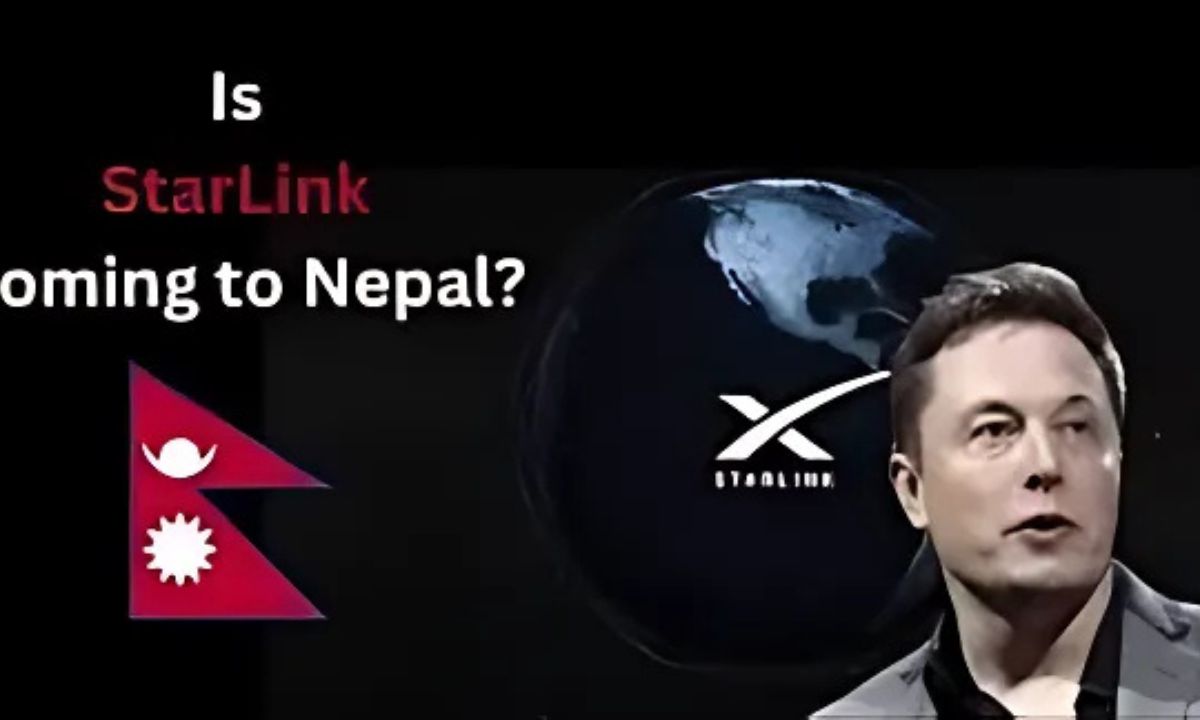Elon Musk’s company, Starlink, is close to receiving approval to begin operations in India. The country’s regulatory authorities have stated that the process is in its final stages. Recently, Starlink launched its official service in Bhutan, another South Asian country.
In China, where the government has invested in companies like Spacecell to provide high-speed satellite internet services, the market is expanding quickly.
For the past two years, Starlink has been trying to gain approval to operate in Nepal. Recently, the company’s representatives met with the Nepal Telecommunication Authority (NTA) to discuss policy and practical barriers to service launch.
Earlier, Elon Musk himself had a virtual meeting with Prime Minister KP Sharma Oli, where he expressed his desire to bring Starlink’s service to Mount Everest. A team from Starlink, led by Rebecca Slick Hunter, presented a demonstration of how the service works to officials from the Ministry of Communications and Information Technology, Prime Minister’s Office, and the NTA.
According to a high-ranking official at the Prime Minister’s office, Starlink representatives have been continuously discussing service expansion with the government and regulatory authorities. Despite geopolitical pressure in the region, Nepal’s existing telecom policy requires at least 20% local participation for foreign investments in the sector, creating some challenges.
The official added that while Starlink has yet to apply a business model that includes local partners in any country, the company desires to operate entirely with 100% foreign investment. Prime Minister Oli has expressed openness to innovative projects like Starlink, but decisions will be made after internal reviews.
NTA officials have stated that satellite internet could be highly beneficial for Nepal’s geography, especially in the Himalayan and high-altitude regions. However, they emphasized that services must comply with existing laws, which include the requirement for foreign investors to follow the 80% foreign and 20% local partnership rule.
Starlink’s Licensing Progress in India
In India, 100% foreign investment is allowed in the telecom sector. Starlink has met most of the regulatory conditions and submitted necessary documentation. The Indian National Space Promotion and Authorization Center (IN-SPACe) has almost completed the approval process. After receiving approval, Starlink will need a service provider license from the Telecom Department and access to necessary spectrum.
Starlink has agreed to follow regulations on the movement of user terminals, which are required for internet access via satellite. These terminals, often referred to as satellite dishes, act as communication points between the user’s device and the satellite network.
Starlink has also agreed to set up a network control and monitoring center in India and ensure that data is not routed through gateways in neighboring countries. Currently, Starlink does not have any gateways in these countries, but it has committed that data will not be routed through any future ones. However, it has not agreed to provide services in Jammu & Kashmir and certain areas of Ladakh.
Challenges and Competition in India and Neighboring Countries
Apart from regulatory concerns, there are also differences between Starlink, Amazon’s Project Kuiper, and existing telecom operators like Reliance Jio, Bharti Airtel, and Vodafone Idea. These telecom companies advocate for auction-based spectrum distribution, while Starlink and Amazon are proposing direct access without auctions.
In neighboring South Asian countries, Starlink is making inroads. It officially launched its service in Bhutan two weeks ago, although it had been available there since 2014. The service’s affordability remains a concern, as it primarily benefits the wealthy. However, it is expected to challenge the market dominance of the two government-run telecom companies, Bhutan Telecom and Tashi Cell.
In Maldives, Starlink became the first satellite internet service provider in 2023. The company has also announced plans to launch services in Bangladesh and Sri Lanka by 2025. However, it is still awaiting regulatory approval in Pakistan and India. In Nepal, the company’s website shows that the service date is unknown.
Other Satellite Internet Providers in South Asia
Besides Starlink, companies like Spacecell in China are expanding rapidly in the satellite internet sector. Spacecell recently discussed service expansion with 30 countries and launched its service in Brazil. It aims to launch 15,000 low-earth orbit satellites by 2030. Additionally, Galaxy Space from China is also expanding its satellite internet services in various countries.
Starlink is striving to provide satellite-based internet in South Asia, facing competition from other players and regulatory hurdles in some countries. However, the company is making progress in securing approval and expanding its reach across the region.




